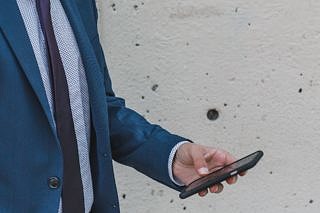La Cour d’appel de l’Alberta rappelle que le témoignage de l’accusé dans le cadre d’un voir-dire est couvert par la protection contre l’auto-incrimination prévue à l’article 13 de la Charte canadienne. Le témoignage offert par l’accusé dans le cadre d’un voir-dire ne peut servir à la Couronne pour établir la culpabilité et celle-ci ne peut en profiter pour contre-interroger sur des questions qui sortent du cadre du voir-dire. De plus, lorsque les parties s’entendent pour procéder à un voir-dire et au procès sur le fond de façon simultanée, les règles doivent être clairement préétablies, notamment quant à la nature exacte de la preuve qui sera versée au fond :
[18] The voir dire testimony of an accused is subject to constitutional protection against self-incrimination pursuant to section 13 of the Charter. When the accused testifies on a voir dire, his testimony cannot later be used as evidence of guilt at trial: R v Darrach, 2000 SCC 46 (CanLII) at para 66, [2000] 2 SCR 443:
Furthermore, Dickson J., in the pre-Charter context, held that “[e]vidence on the voir dire cannot be used in the trial itself” (Erven, supra, at p. 932). Although this Court has not specifically ruled on whether s. 13 of the Charter protects an accused against self-incrimination on a voir dire, I am of the opinion that it does (as the Superior Court of Quebec found in R v Tarafa, [1990] RJQ 427, at p 429). Section 13 provides that:
- A witness who testifies in any proceedings has the right not to have any incriminating evidence so given used to incriminate that witness in any other proceedings, except in a prosecution for perjury or for the giving of contradictory evidence.
This privilege against self-incrimination applies because a voir dire is an “other proceeding” within the meaning of s. 13. In Dubois v The Queen, 1985 CanLII 10 (SCC), [1985] 2 SCR 350, at p. 386, McIntyre J. (in dissent, but the only one to address this issue) found that
[t]he voir dire is clearly another proceeding. Its purpose is not to resolve any issue raised in the charge but merely to determine what may be introduced into the proceedings for that purpose. After the voir dire the evidence found to be properly admissible in the proceedings is admitted and thereafter forms part of the proceedings. That which is excluded never becomes a part.
This is true of the voir dire under s. 276. Its purpose is to enable the judge to determine the admissibility of evidence. The voir dire is not itself part of the determination of the guilt or innocence of the accused. When the accused testifies on a voir dire, the protection of s. 13 means that his testimony cannot later be used as evidence of guilt at trial. It was established in R v Kuldip, 1990 CanLII 64 (SCC), [1990] 3 SCR 618, that an accused’s testimony from a previous trial on the same charge can be used by the Crown at the retrial only to impeach his credibility, and not as evidence of guilt. In Kuldip, at p. 636, Lamer C.J. found that using such a prior inconsistent statement for its truth to incriminate the accused is forbidden by s. 13, but that
s.13 does not preclude the use of previous testimony during a subsequent cross-examination if the sole purpose of that cross-examination is to challenge the credibility of an accused who has chosen to testify in the second proceedings.
[19] The Crown is not permitted to use the voir dire as “a forum for unfair questioning of the accused” and must confine cross-examination to what is necessary to determine the issues on the voir dire: ibid at para 64. Inconsistencies between the testimony of an accused on the voir dire and trial can be used to impugn credibility but not to establish culpability: ibid at para 67.
[…]
[23] Use of a blended voir dire is an important tool to increase the efficiency of the trial process by avoiding the unnecessary duplication of witness testimony. However, it must be conducted in a fashion that does not detrimentally affect the rights of an accused person. Before embarking on a blended voir dire, counsel and the court should have a clear understanding of the procedure to be followed, the nature of the evidence that will be adduced and the use to be made of that evidence following any rulings. This is particularly the case whenever the accused testifies in the voir dire or when the accused is self-represented. For example, will evidence called in the voir dire automatically become evidence at trial, or will an application to do so be required? It the accused elects to testify in the voir dire, will that evidence become evidence in the trial, having regard to the accused’s section 13 Charter right against self-incrimination?
[24] See also R v Mason, 2015 NLTD(G) 93 at paras 32-33, 1149 APR 231 and at para 90 (with emphasis added):
I simply repeat my suggestion that all parties and the trial judge ensure that they are of one mind, at the outset of the proceeding, on the parameters of the proceeding, or any part of it, with particular reference to the use of evidence for the purpose of establishing elements of the offence and to the status of any evidence that may be given by an accused during a proceeding characterized as a blended voir dire.
[25] In summary, a trial judge must ensure that each party consents to the blended voir dire procedure and its terms, particularly as it relates to voir direevidence given by the accused and the use to which that evidence can be put following any rulings. The examination and cross-examination of an accused on a voir dire is generally restricted to those matters at issue on the voir dire.
